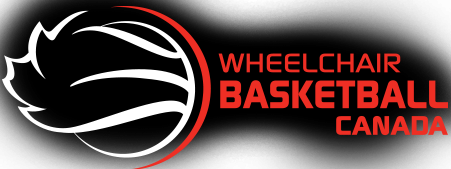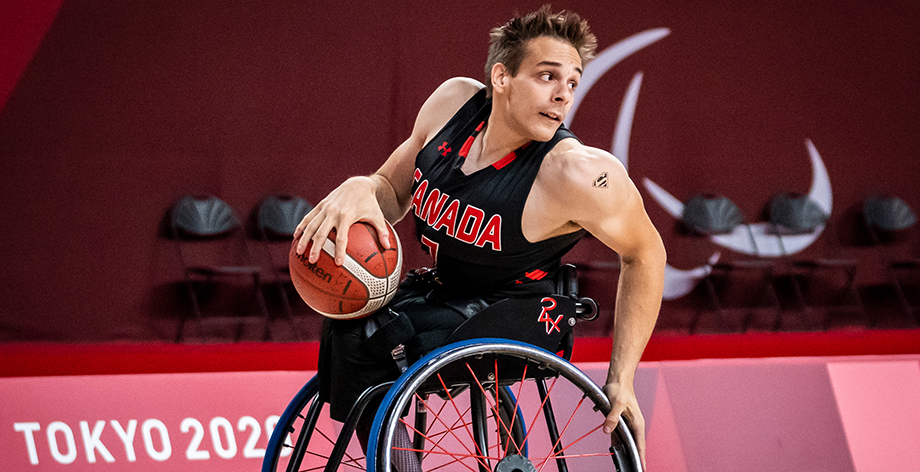Vincent writes about growing up in Quebec City, discovering wheelchair basketball and landing at the University of Texas in this month’s Athlete Spotlight presented by Toyota.
Growing up in Quebec City was pretty normal. I was born with a vertebra that was misplaced, and it split the spinal cord in half. I had amazing parents that didn’t really see disability as a problem. They never really pushed sports, they just wanted me to do something, and I tried wheelchair basketball, and I just got hooked.
I have a younger brother who is turning 24. My relationship with him has been up and down, I’d say, but it has been a lot better since I moved away. For some reason, I think it makes zero sense, but since I moved away, we got closer. We talk a lot more now.
We were never competitive with sports growing up. My brother would beat me at any sport we played, but as soon as we started counting points, it wasn’t interesting to him at all. Playing 21 in the driveway was the only time he would count points; other than that, he had no interest at all.
Introduction to wheelchair basketball
I had a physio when I was younger that was really into sports, and my dad is a hockey player, so that was kind of how I got interested in sports. I would have played hockey if I was able-bodied – growing up in Canada, that’s a big thing.
My physio brought me to open sport day, and there was an opportunity to try out a bunch of different sports. I tried pretty much everything and just stuck with wheelchair basketball.
Before that open sport day, I used crutches to walk around. I never had a day chair. I never thought about sitting in a wheelchair because in my brain, at six or seven years old, using a wheelchair meant that my freedom was gone. Using a wheelchair, to me, meant there was just no freedom whatsoever; then I sat in one, and I never wanted to get out.
Being such a big fan of hockey, I wanted to try sledge hockey, but then practices were Sunday mornings at 6:15 a.m., 30 minutes from where I grew up, and my dad said, ‘No.’ Even for me, as soon as I heard the practices were at 6:15 in the morning, I was like, ‘Alright, I’m out. No. I’m going to stick with wheelchair basketball.’
For a while, I played both wheelchair tennis and wheelchair basketball – basketball practice on Saturday and tennis on Sunday. Then at some point, as I got older, my dad was like, ‘Alright, I need at least one day out of my weekend,’ so at that point, I was probably eight or nine years old, and he said, ‘You got to pick one,’ and I just said, ‘Well, I like basketball a lot more.’
At that point, I was just playing to play because I liked the game. It wasn’t until I was 14 or 15, around London 2012, that I realized, ‘Oh, it’s actually a thing.’ I had no idea. That was when I realized that the National Team was a thing and that I could do it.
I probably realized I could challenge for the National Team after I made the Under-23 team in 2013. The tournament was in Turkey, and that was pretty cool. I didn’t think I was going to go to the next level, but I think when I got invited to my first men’s selection camp in 2014, I was like, ‘Oh, actually, this could be a thing I do.’
Meeting Pat Anderson
One of the first times I spoke with Pat when he came back in 2016 for Rio, I was like, ‘I don’t know if you remember, but you signed one of my bags, and I have a picture with you from when I was like 10 years old.’ He said, ‘No, I don’t remember.’
I knew Pat and knew of who he was because I mean everyone knows Pat – I thought that’d be cool to play with him.
Now I say to everyone; I can just call Pat whenever I want; I have his phone number. I can call him to joke around – it’s interesting for sure how that worked out. It’s a weird dynamic. Everything kind of came full circle.
I noticed him when he was in London; best player in the world, super cool. I’m just a little guy from Quebec that barely spoke English at that point. It’s pretty cool how that all worked out.
Attending school in Texas
Elodie Tessier, who plays at the University of Texas at Arlington, messaged me in March of 2020, at the beginning of the pandemic. I was at NWBA finals in Wichita. She messaged me and said, ‘Hey, they’ve got a 1.5 that is graduating this year, and they need one. Do you want me to put your name in there?’ I was like, ‘Sure,’ and that’s basically what happened.
One of their main guys, I played against him in 2013 at Junior Worlds, we chatted a bit, and that’s basically how I decided to attend the University of Texas at Arlington.
I’m undeclared on a major right now, but I am leaning towards communications. I like to talk to people, and I think being fluent in two languages and figuring out something to do in the communications field would be pretty cool.
First Paralympic experience in Tokyo
Tokyo was cool, but it was weird at the same time. I always thought my first Games were going to be packed full of people, and there was nobody.
It’s weird to say, but it felt almost like any other tournament with the added pressure of a Paralympics.
It was super cool. It was a great experience. It wasn’t the full experience, but it was definitely something really interesting.
Advice for new athletes trying wheelchair basketball
Just do it. It’s super fun. Wheelchair basketball is the best sport, first of all. It’s the best sport, that’s just it. There’s obviously other sports that are pretty cool, but there’s a reason why it’s always the most popular at the Paralympics. The games are always full. Adaptive sports can be rough – people don’t understand that they don’t know it, but it’s a full-contact sport.



